#mung bean curd
Explore tagged Tumblr posts
Text
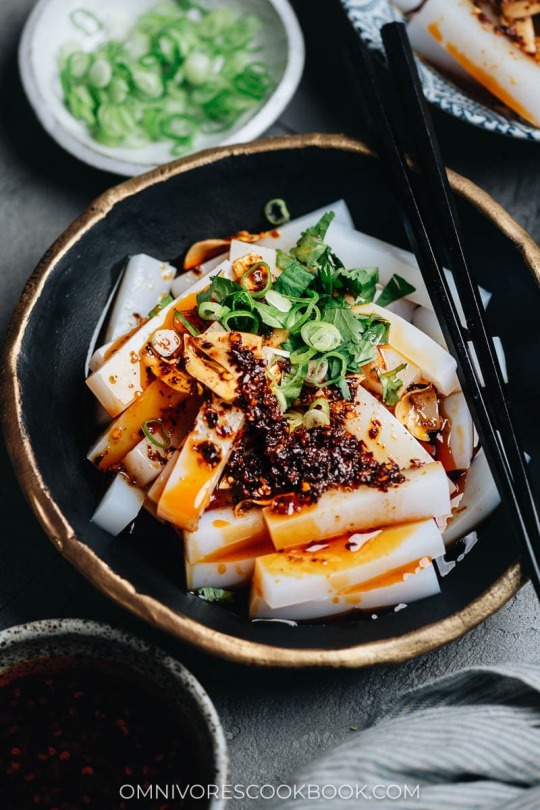
Mung Bean Curd With Chili Oil Sauce (Liang Fen, 凉粉)
#omnivorescookbook#chinese#glutenfree#gluten free#dinner#savoury#food#recipe#recipes#mung bean#bean curd#mung bean curd#chili#liang fen#vegan#veganism#vegetarian#plantbased#plant based#mung beans
56 notes
·
View notes
Text
Recipes for Water Based Kintypes
These are recipes I enjoy that make me feel more otter or things that I think would! This is pretty anthromorphic since I am eating human food, but I hope this is still helpful!
Not taking requests for other types of therians/kintypes since this was a lot of work, so sorry!

Shellfish - Including Cephalopods
Clam Fritters
Grilled Cockles
Clam Chowder
Baked Scallop Shells
Cajun Seafood Boil
Garlic Butter Razor Clams
Bouillabaisse
Spanish Paella
Crawfish Linguine
Shrimp Ceviche
Spicy Stir Fried Squid
Ikayaki (Japanese Grilled Squid)
Squid Ink Pasta With Shrimp
Jellyfish Salad (Putting This Here)
Salt and Pepper Cuttlefish
Raw Oysters on the Half Shell
New England Fried Clams
Maryland Crab Cakes
Lobster Thermidor
Yangnymeon Gejang (Spicy Raw Crab)
Sailor Style Mussels
Seafood Okra
Shrimp Platter
Finned Fish
Cioppino
African Fish Stew
Trout With Garlic Lemon Butter Sauce
Miso Glazed Salmon
Unagi Don (Grilled Eel Rice Bowl)
Oden (Japanese Fish Cake Stew)
Foil Pack Halibut
Tuna Onigiri
Sardine Pasta
Authentic Anchovy Caesar Salad Dressing
Mediterranean Style Fish Soup
Salmon Ochazuke (Tea Rice)
Fish Tacos
Garlic Butter Baked Tilapia
Pan-Seared Halbut with Caper Sauce
Crispy Pan Fried Tilapia
Herring and Pumpkin Pot Pie
Creamy Fish Chowder
Potato Pancakes with Smoked Salmon, Caviar and Dill Cream
Pan Seared Tilapia
Clay Pot Fish and Tofu
Indian Fish Masala
Spicy Green Masala Fish Fry
Spicy Salmon Crudo
Oven Fried Catfish
Lemon Butter Pan Seared Trout
Non-Fish Meat
Fried Frog Legs
Rabbit Cacciatore
Chicken Chasseure
Escargot (Snails)
Human Safe Kibble Recipe
Chicken and Dumplings
Wood Roasted Whole Duck
Peking Duck
Honey, Soy, and Ginger Duck
Doro Wot (Ethiopian Chicken and Egg Stew)
Cantonese Soy Sauce Whole Chicken
Chinese Chicken and Mushroom Soup
Scotch Eggs
Vegetarian, Vegan, and Plant-Based
Wakame (Seaweed Salad)
Tofu "Salmon" (Consider using rice paper and seaweed as "skin")
Beer Battered Vegan Fried "Fish"
Sweet and Sour Vegan "Fish"
Braised Lotus Roots
Korean Marinated Eggs
Caramelized Garlic-Chili Lotus Stems With Mung Bean Noodles
Sauteed Baby Bok Choy (Saw some otters IRL eating these raw)
15-Minute Zucchini, Pea, and Watercress Minestrone
Vegan "Fish" Pie
Vegan "Fish" Sauce
Vegan "Eel"
Vegan Takoyaki (Octopus Balls)
Nori Wraps
Bean Curd Sticks
Vegan "Tuna" Salad
Watercress Soup
Tofu Pot Pie
Seaweed and Tofu Fritters
Vegan Garlic Butter "Scallops"
Oyster Mushroom Skewers
Seaweed Miso Soup
Cold Noodles in Icy Broth
Marinated Bean Curd with Kelp
Miso Garlic King Oyster Mushrooms
Old Bay Potatoes
Egg Fried Rice
Chewy Potato Noodles
Desserts
Hot Buttered Apple
Melon Ice Cream Soda Float
Frozen Fruit Shaved Ice
Lemon Snow Pudding
Summer Fruit Salad
Blue Jello Cloud Mousse
Kelp Nougat Crunch
Frozen Whipped Jello
Taiyaki (Fish Shaped Sweet)
Soda Float
Cloud Coconut Jelly
Haupia (Coconut Milk Squares)
Raindrop "Cake"
Any Shaved Ice
Lemon Posset
Fruit Filled Spring Rolls
Drinks
It stopped letting me attach links so names only here.
Clamato Juice
Alcoholic: Micheladas
Wheatgrass Juice
Cucumber, Lemon, Mint, and Ginger Water
Coconut Milk Brazilian Limeade
Ocean Water Punch
Alcoholic: Seafood Bloody Mary
Watercress and Honey Tea
Kombu/Kelp Tea
Shellfish Broth
Blue Raspberry Iced Lemonade
Hwachae (Korean Watermelon/Fruit Punch)
Agua de Pepino (Cucumber Agua Fresca)
Fish Bowl Punch
#therian#otherkin#otter therian#otterkin#therian recipes#Kin recipes#therian food#kin food#mermaidkin#oceankin#whale therian#seal therian#selkiekin#capybarakin
86 notes
·
View notes
Text
How to Plan a High-Protein Indian Veg Diet Without Using Protein Powders

There’s a common misconception that a vegetarian Indian diet is naturally low in protein—especially when compared to meat-based or whey-supplemented diets. But with the right food choices and a bit of planning, you can absolutely meet your protein needs without using protein powders, while still enjoying a traditional, flavorful Indian menu.
Whether you’re aiming to build muscle, lose fat, or simply improve your nutritional balance, this guide will show you how to plan a high-protein Indian vegetarian diet using whole foods alone.
1. Understand Your Protein Needs
Before creating your meal plan, it’s important to know how much protein you actually need. The average sedentary adult requires around 0.8 grams of protein per kilogram of body weight, but if you're physically active, your requirement may rise to 1.2–2.0 grams/kg depending on your goals.
For example, a 60 kg person aiming for muscle maintenance or gain may need 75–100 grams of protein per day. This can be comfortably achieved through strategic choices in a vegetarian diet.
2. Start Your Day with a Protein-Packed Breakfast
Breakfast sets the tone for your day—and it’s a great opportunity to get in a protein boost.
Here are some high-protein Indian breakfast ideas:
Moong Dal Chilla (mung bean crepes): Each serving can provide 12–15g protein
Besan (Gram Flour) Cheela with paneer filling: Rich in plant protein and easy to cook
Sprouts Upma or sprouted moong salad: Loaded with digestible plant protein and fiber
Paneer or Tofu Paratha with curd: A powerhouse of protein and healthy fats
Pair your meals with a glass of unsweetened soy or almond milk to further increase protein content.
3. Make Lentils and Legumes the Hero of Your Lunch and Dinner
Pulses, dals, and legumes are staples in Indian cuisine—and they're packed with protein, fiber, and complex carbs. The key is to combine them with complementary grains to ensure a complete amino acid profile.
Try these combinations:
Rajma-Chawal (kidney beans and rice)
Chana Masala with Jowar Roti
Dal Tadka with Brown Rice or Bajra Roti
Toor or Masoor Dal with Quinoa
Add a serving of curd or a bowl of palak paneer on the side to further enhance your meal’s protein content.
4. Don’t Underestimate Dairy and Soy Products
Vegetarian diets are at an advantage when it comes to dairy and soy, both of which are rich sources of high-quality protein.
Make room in your meal plan for:
Paneer (cottage cheese) – great in curries, salads, or grilled
Tofu – a soy-based alternative with excellent versatility
Curd/Yogurt – packed with probiotics and about 10g protein per cup
Buttermilk or lassi – protein-rich and excellent for digestion
Grilled tofu tikka or paneer bhurji can double as a snack or dinner side.
5. Smart Snacking for Extra Protein
Snacks are a great way to fill protein gaps between meals. Opt for:
Roasted chickpeas or chana
Boiled sprouts or peanut salad
Handful of almonds, walnuts, or mixed seeds
Homemade protein laddoos with jaggery, peanuts, and sesame seeds
You can also include hummus with vegetable sticks or whole wheat toast to keep it tasty and protein-dense.
6. Meal Prep and Balance
Balance is key. Your plate should ideally consist of:
1 portion of protein (dal, paneer, tofu, legumes)
1 portion of whole grains (millets, brown rice, whole wheat)
Plenty of vegetables for fiber, vitamins, and minerals
A healthy fat source (ghee, nuts, or seeds)
Meal prepping ensures you never miss a protein-rich meal due to lack of time or planning.
Conclusion
Meeting your daily protein requirements on a vegetarian diet doesn’t have to involve protein powders or exotic ingredients. By thoughtfully combining everyday staples like dals, legumes, paneer, tofu, and whole grains, you can create meals that are both nourishing and satisfying. With a little planning and creativity, you can enjoy the full spectrum of high protein Indian food that supports your fitness goals, boosts energy, and fits seamlessly into your lifestyle. Eating well has never tasted more traditional—or more powerful.
0 notes
Text
Traditional Breakfast in North India - Kachori With Aloo Ki Sabji

Kachori is a flaky and crispy deep-fried Indian snack. It is usually served with chutney and yogurt or 'dubki wale aloo'. It can also be eaten with a cup of hot masala chai. You can find khasta kachori stalls on practically every street in Delhi's old town. They serve stuffed mung bean dumplings smothered in sweet yogurt and spiced chutneys. History of Kachori Kachori is a popular Indian street food that comes in both savory and sweet versions. These delicious dumplings are usually made with all-purpose flour aka maida and are filled with a variety of ingredients, depending on the region. They are served with spicy aloo curry and different types of chutneys. Kachoris are also a festive recipe that is often prepared for Holi and Diwali. Marwaris are credited with creating this tempting snack. They were traders from the western Indian state of Rajasthan who traveled across the country. They introduced kachoris to various regions and made them a part of the local cuisine. Over the years, this dish has been reimagined in many ways. Today, there are countless varieties of kachoris that are available across the country. The most common type of kachori is the Raj Kachori. This variant originated in Bikaner and can now be found in every corner of the country. It is stuffed with a combination of urad daal and moong dal along with Indian spices. It is topped with curd, green chutney, tamarind chutney, and pomegranate seeds. It is served as a tea time snack or during chaat parties. Another variation is the Mogar Kachori, which hails from Jodhpur. It is a little different from other varieties of kachoris, as it is richly filled with mawa and semolina. It is a very tasty dish that is often enjoyed with spicy aloo sabzi. Moreover, the Shegaon Kachori is a popular variant that is a favorite of people in West Bengal. This type of kachori is soft and is stuffed with peas. It is served as a tea time snacks and it is very filling. This kachori is usually accompanied by a cup of chai or a glass of milk. Other variations of kachoris include the pyaaz kachori, which is stuffed with chopped onion and mixed with a variety of Indian spices. It is commonly found in the states of Rajasthan, Uttar Pradesh and Madhya Pradesh. The filling is then covered in a layer of dough and deep fried. It is a popular street food in the cities of Mathura and Vrindavan. Ingredients Required for Dough Kachori is a very popular north Indian dish. It is often eaten as a starter, alongside a bowl of authentic Indian curry. It is also a favourite street food, especially in Kolkata. This is because it is very easy to make and can be enjoyed on the go. Aloo ki kachori is also a great snack for kids. It is a very easy and quick dish to prepare, but it can be quite filling. Moreover, it is also a very delicious dish. It is best served with a raita or yoghurt dip. It is the perfect finger food for any occasion. Growing up in Kolkata, winters meant a warm and spiced besan filled soft kachori with aloo ki sabji for breakfast. It was a match made in heaven and I loved every bit of it. Whether it was the tandoor cooked ones from dhabas on road trips or the pan-crisped version that my mother made at home, it always satisfied my hunger for a delicious and comforting meal. To make this recipe, you will need a few key ingredients. First, you will need to prepare the sabji. To do this, boil the potatoes and then mash them well. Then add the dry spices, chopped green chillies, ginger paste and salt to taste. Combine everything well and set it aside to cool. Next, you will need to prepare the dough for the kachoris. To do this, mix the refined flour with carom seeds, red chilli powder and a pinch of turmeric. Add oil to the mixture and knead it into a soft dough. Cover the dough and keep it aside for 20 minutes. Once the dough has cooled, divide it into small balls. Flatten each ball with a rolling pin and then scoop 2 tbsp of the prepared sabji into the centre. Bring the edges together and seal it by pressing and rolling. Repeat this process with the remaining dough. Once you have prepared the kachoris, heat the oil in a frying pan and fry them until golden brown. Serve them hot with the sabji and enjoy! Preparation of Kachori Kachori is one of the most loved street foods in North India, especially Rajasthan. This fried treat is a favorite with people on the go and pairs well with a cup of masala chai. It is also a good option for a quick indulging evening snack. The ingredients used in this recipe are a blend of yellow moong daal and spices stuffed in a flaky dough and deep-fried to perfection. While there are many varieties of this dish, the basic preparation remains the same. The ingredients are boiled and mixed together, the dough is stuffed with the mixture, and then deep fried until it turns golden brown and crisp. The final product is a delicious and crunchy snack that can be enjoyed on its own or with various Indian dishes such as aloo ki sabji, rajma sabzi, and pakoras. Most kachoris are made with urad dal as the main ingredient. They are then stuffed with a combination of different spices and vegetables to make them tastier. The savory and sweet flavors of the dish pair well with the spicy and creamy sabji. This makes kachori the perfect dish to eat during winter when the weather gets colder and you want something warm and filling. It is important to use fresh fine maida flour when making kachori to ensure the right texture and flavor. You can substitute it with wheat or atta flour but it will not give you the same flavor and crunch. The kachoris are best when eaten on the same day they are prepared. However, they can be stored in an airtight container and re-fried for later consumption. Another version of kachori that is popular in Jodhpur is the Mogar Kachori. It is filled with soaked moong daal and spices, fried and paired with a spicy aloo sabji. It is a popular breakfast in Rajasthan and can be found on the streets during morning hours for people to pick up on their way home. Other popular variations of kachori include the Kota Kachori and the Pyaaz Kachori. The former is a puffed version that is similar to a gol gappa and is typically eaten in the state of Rajasthan. The latter is a savoury kachori that has a puffed up shape and is made with onion and a lot of spices. Preparation of Aloo Sabzi Preparation of Aloo Sabzi: Our delectable Aloo Ki Sukhi Sabji makes for an easy and nutritious lunch or dinner option with its fresh ingredients and aromatic spices, making this recipe particularly appealing among kids. Perfect with Rotis or Pooris as well! Make this delicious sabji with just a handful of ingredients and in just minutes! For maximum efficiency, boil potatoes a day ahead and keep them chilled to speed up the cooking process. Additionally, the amount of spinach can be adjusted based on your personal preference; feel free to include kasoori methi (dried fenugreek leaves) to customize this dish even further! An essential ingredient for creating delicious potato curry dishes is using high-grade potatoes with high wax contents that resist disintegration during stewing. Gold, red (romano) and Charlotte varieties of potatoes work best with this dish while russet varieties with lower wax content become soggy more quickly when left sitting for extended periods. Begin this recipe by heating oil on medium flame in a kadai/wok/pan and adding cumin seeds, asafoetida/hing, and cumin powder until they begin to crackle, adding chopped tomatoes, green chillis, ginger, turmeric powder, coriander powder, and salt before stirring for 3 minutes or so until the seeds start crackling again. Next add chopped potatoes gently tossed with spices before covering it for another 10-12 minutes on low heat before taking it off of heat and taking it off of heat! Read the full article
0 notes
Text
#Dengue. (3)
Remember, liquid foods are low in calories and other essential nutrients. Therefore, along with liquid food, the patient should also be given soft nutritious food, which is easily digested. Such as soft rice, cooked semolina, sago with milk, small fish without bones or fish broth curry. Patients cannot eat much or normal food due to anorexia. Therefore, food should be selected in such a way that the calorie and nutritional needs of the body are met even if you eat little food. That is, high-calorie foods such as soft mung bean or lentil khichuri, egg pudding, phirni, milk pies, curd, various types of soup, etc. should be eaten.
During dengue disease, the body's demand for protein increases. Our body has a special need for protein to meet various damages and recover quickly. Milk, eggs, fish, chicken, lean red meat etc. are the main sources of protein.
Continue....
0 notes
Text

Mung Bean Curd with Chili Oil Sauce / Liang Fen / 凉粉 (Vegan)
#vegan#snacks#appetizer#street food#chinese cuisine#asian cuisine#mung bean curd#mung bean starch#soy sauce#vinegar#beans#black bean sauce#chili#green onion#cilantro#cucumber#chinese 5 spice powder#sesame seeds#🤍
26 notes
·
View notes
Photo

Mung Bean Curd with Chili Oil Sauce (Liang Fen, 凉粉) A traditional street food that’s bursting with the flavors of a savory spicy sauce, liang fen is just what you need to bring a taste of China to your own kitchen!
Recipe => https://omnivorescookbook.com/liang-fen-mung-bean-curd/
498 notes
·
View notes
Photo

Easy to Learn Korean 1564 – You get what you pay for (part one).
#Bean curd residue that’s leftover from tofu making (bean-dregs)#bean-dregs cake#biji#bissan#cheap#expensive#inexpensive#It’s cheap and low quality.#mung bean pancake#Next time I’ll buy the higher quality one.#old proverb#pancake#ssayo#sticky#That cheap phone is not good quality.#traditional rice cake#tteok#you get what you pay for#그 저가의 폰은 품질이 안좋아요.#다음번에는 조금 더 고급으로 살거예요.#떡#비싼#비지#비지떡#빈대떡#싼#싼 게 비지떡이에요.#저가의#Chad Meyer#Moon-Jung Kim
8 notes
·
View notes
Text
april 3rd ✨

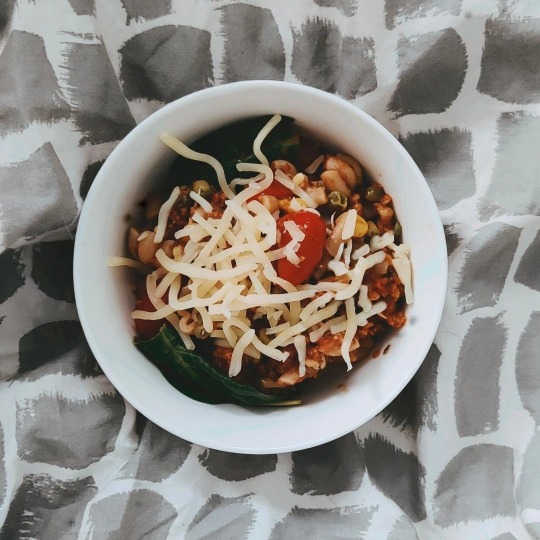

black coffee // 2 kcal
peach and passionfruit curd // 90 kcal
protein pasta with vegetarian mince, grated emmental, crushed tomatoes, peas, corn, mini plum tomatoes, spinach and mung bean sprouts // 814 kcal
kinder surprise // 110 kcal
total: 1016 kcal, 68g
approx. tdee: 1350
fasted: 28h
why did I eat this much when i pretty much just laid in bed all day,,, that's barely a deficit and since i only count a 1000 kcal deficit as "on track", i broke my goddamn streak
(had two bowls of pasta again!)
doing the thing (that literally never works, but maybe this time!) where i post my log early to avoid binging lol
8 notes
·
View notes
Text
KW 2021: Blending Cultures
Day 2 for Kataang Week 2021 hosted by @kataang-week with the prompt Blending Cultures!
Definitely one of my better oneshots this week, mildly inspired by that one tumblr post talking about how the cloudbabies' mixed heritage should've been more highlighted in LoK. Hope I did it justice!
Links: AO3 | FF.net
Summary: Another year, another summer, another week of prompts celebrating our favorite couple. Kataang Week 2021 Day 2: Blending Cultures. Aang and Katara were from two very different cultures, but they made their family work anyways.
Word Count: 2.6K
The Air Nation and the Water Tribes.
Two extremely versatile societies, with rich cultures and very diverse people.
From these two societies came two very special people, who against all odds managed to create a beautiful life together: Avatar Aang from the Southern Air Temple and Master Katara from the Southern Water Tribe.
From the very start, Aang and Katara intertwined their traditions in ways not many believed were possible in the fresh post-war era.
Their wedding, the beginning of their family, had been the grandest event in over a century for both nations given that the war had prevented such festivities during its reign of terror. That day was to be a sign of healing, of peace, and of celebration as their friends and family from all four nations came together at Air Temple Island in honor of love.
Aang had been standing at the marble altar in long flowing robes of the brightest yellows, reds, and oranges. The warm smile on his face complimented the warm hues of his clothing, and a string of engraved wooden beads and thread tassels adorned his neck.
Katara, on the other hand, looked like the night to his day, wearing a deep, dark blue dress passed down from her mother. It had golden thread embroidered on the bodice and skirt to mimic the constellations sailors used to navigate the icy waters surrounding her home, and, in Aang’s opinion, it gave her an absolutely ethereal presence.
Bouquets of ice lilies, pink flowers that grew near the Southern Spirit Oasis, intermingled with the flowers of moon peaches grown at the Air Temples lined the halls of the temple as the bride and groom’s loved ones watched them perform each nation’s respective wedding customs.
As per Air Nomad tradition, the week before the wedding, Aang and Katara had visited the four air temples and meditated in front of each of the eternal tornadoes in hopes that the cardinal wind spirits would guide them in the right direction no matter where life led.
The pair had also gotten complimentary tattoos on their backs, right over their hearts (slightly above in Aang’s case due to his scar): yin for Aang and yang for Katara, to symbolize how they balanced each other and created harmony.
When they stood on the altar, their officiator, Hakoda, had tied three sacred red strings around their ring fingers. They were woven from plants growing around Aang’s original home, the Southern Air Temple, and symbolized the red thread of fate binding them to each other, their soulmates. The strings also stood for the three tenets of a successful marriage: trust, communication, and love, all of which they had plenty of.
The second part of the ceremony incorporated the Southern Water Tribe traditions. Around Katara’s neck rested her mother’s necklace, the symbol for water on one side and the symbol for air on the other, an addition by Aang (with her permission of course) so that she would never have to choose between wearing one pendant or the other.
After their hands had been binded by the threads, their two chosen tribal elders, Pakku and Kanna, stepped up with wooden bowls of navy paint in hand and gave them their marks from ice dodging all those years ago. Katara, once again, received a crescent moon in the center of her forehead, the Mark of the Brave, while Aang was given the Mark of the Trusted, a slightly curved arch that barely touched the tip of his arrow.
“Aang and Katara,” Hakoda began, “Your two marks show that you are the embodiment of bravery and honesty, and these traits will do you well in the years to come. You will always have courage and trust in one another, as those are your natural inclinations, but you must take care to incorporate logic and wisdom into your interactions and decisions with one another to remain as steadfast and stable as the undulations of the great ocean.”
He turned to the enraptured airbender, who was unable to tear his gaze away from his soon-to-be wife.
“Do you, Avatar Aang of the Air Nomads, vow to trust Katara, to accept, learn from, and return her courage and bravery, to love her through wind and hail, through blizzards and storms, in times of plenty and of scarcity, for as long as the moon guides the sea’s waves to shore?”
“I do.”
Hakoda smiled and turned to his daughter.
“And do you, Master Katara of the Southern Water Tribe, vow to have courage for Aang, to accept, learn from, and return his trust and honesty, to love him through wind and hail, through blizzards and storms, in times of plenty and of scarcity, for as long as moon guides the sea’s waves to shore?”
“I do.”
“Then let the spirits of our ancestors, the great Tui and La, and the cardinal wind spirits bear witness to this union and bless it as they have with all those before.”
Hakoda, Pakku, and Kanna all dipped their fingers into a small bowl of water from the Spirit Oasis and sprinkled it over the couple.
“You are now husband and wife. Welcome to the family, son.”
Aang and Katara both smiled widely and pulled each other into a tight embrace.
“We’re married,” the airbender whispered incredulously.
“I know,” she said back. “I was there.”
He laughed and swept her up in a kiss, taking care not to mess up her ornate braids as he closed the distance between them.
“I love you,” he murmured when they finally parted.
“I should hope so, you did just vow to love me no matter what.”
Aang rolled his eyes and pouted. “I’m trying to be sweet here, the least you could do is return the favor.”
Katara gave him an exaggerated sigh and rested her head on his chest, her arms draped around his neck and she closed her eyes in contentment.
“I love you too, Aang. Forever and always.”
“See now that’s more like it!” he grinned, making the waterbender chuckle.
“All that planning, all the months of stress and doing overtime to get the next two weeks off and planning and the wedding invitations and did I mention the planning?” The two shared a short laugh. “All of that and we’re finally here. We’re married. What do we do now? Where do we go from here?”
“Slow down there, Tara. We have the rest of our lives together to figure all that out. Let’s stay in the moment.”
“Rest of our lives. I like the sound of that,” she smiled.
“I did promise you that we would grow old together, did I not? I intend on seeing that through. For now though, the buffet will be starting and I’m famished. Let’s go eat!”
“You sound like Sokka,” she deadpanned, an amused glint in her eyes nevertheless. “Lead the way, my dear husband.”
The airbender gallantly gestured to where the rest of the crowd had already started heading. “But of course, my lovely wife.”
The banquet, like their wedding, was an exquisite culmination of food from all over. There were countless Air Nomad and Water Tribe dishes present, in addition to a few from the Earth Kingdom and Fire Nation like bean curd puffs, mochi, and, of course, Aang’s personal favorite, egg custard tarts.
Though Aang had reassured his bride during the wedding planning that she could arrange for as many meat dishes as she liked for her Water Tribe family, Katara had declined, saying that they could go without it for one day.
Instead, the feast had traditional southern foods like kale cookies, five flavor soup, sea prune stew (which Aang took extra care to avoid), and a new dessert that Sokka had been working on: spun sugar in the shape of a ball that he liked to call “cotton candy”.
The guests attending were especially excited for the Air Nomad cuisine present, as such a variety of foods from their culture hadn’t been seen in over a century. Vegetable-filled dumplings and bowls of savory mung bean curry sat on round platforms that rotated in the center of the tables. Golden platters held coconut macaroons, warm steamed buns, and a large variety of fruit pies made from the trees that grew on the mountainside next to the temples. There was also a special syrup made from maple trees that went over a fluffy Earth Kingdom delicacy called “pancakes.”
Everyone had an absolutely grand time, and the event was one talked about for quite some time to come, both with its political significance (the Avatar’s wedding wasn’t something that happened every day) and the symbolism it had for how the nations themselves could work together if they tried to create something beautiful.
The way Aang and Katara’s traditions mixed that very first day of their family was reflected throughout the rest of their life as they blended their cultures for their children.
Aang often took Bumi, Kya, and Tenzin to meditate by the lagoon for some tranquility and peace of mind. He reminded them of the importance of being open to new ideas and to look at things clearly and calmly. He helped them take on life as it came and have faith that they would always be led in the right direction by fate like a leaf being carried by the wind.
Katara also took the three to the lagoon on the southwest tip of the island, not so much to meditate but rather to observe the motion of ripples and the subtle movement of the water. She taught them to always have hope and to not be detached from their emotions. She wanted them to remain present in the moment, making sure they were aware of what they were feeling without being consumed by it- a delicate balance like the ebb and flow of the tides.
Once Bumi, Kya, and Tenzin each turned 14, their parents took them down to the South Pole for ice dodging, a Southern Water Tribe coming-of-age ceremony and rite of passage. As was tradition, their dad, Aang, was to take the three out on a wooden sailboat to navigate the treacherous and iceberg-filled waters of the Antarctic.
Though he wasn’t born in the Water Tribes, the airbender made sure to ask and learn all he could from Hakoda, Sokka, and Pakku so that he could pass on and perform those special father-child rituals.
No one was grinning wider than Aang when he awarded Bumi the Mark of the Brave for preventing the boat from capsizing, his heart had overflowed with joy giving Kya the Mark of the Trusted after she guided them through a narrow glacial pass, and he felt nothing but pure pride painting the Mark of the Wise on Tenzin’s freshly-tattooed arrow after his creative airbending solution to evade an ice blockade.
Despite his young age, Tenzin was an incredibly skilled airbender. Alongside Aang, he was one of the youngest masters in Air Nomad history, having earned his arrows in an extremely tear-filled ceremony a mere month before going ice dodging.
In fact, all of the kids were quite naturally talented at their respective disciplines. Bumi, a nonbender, took up many martial arts forms and combat styles, specifically “aikido” and “anipak.”
Aikido was an Air Nomad self defense technique. Though Aang taught all his children to use any form of fighting only as a last resort, he wanted to make sure they could protect themselves in a precarious situation. Aikido aligned with the Air Nomad beliefs of pacifism by relying on the principle of using your opponent's energy against them rather than being the aggressor.
Anipak, on the other hand, was the name given to the Southern Water Tribe style of combat. Bumi learned the ways of the boomerang and scimitar, a type of sword with a long curved blade, from his uncle Sokka and grandfather, who were delighted to teach him such a vital part of his heritage.
Both fighting techniques served Bumi well during his time in the United Forces and made him known as a great general, soldier, and leader, not just the child of two of the most powerful benders in the world.
As the only girl and spitting image of Katara, Kya learned healing and the Southern Water Tribe style of waterbending from her mother. Despite being a waterbender, she had the heart and spirit of an airbender like her father. She had a natural aptitude towards healing, much like Katara, but didn’t want to learn to fight. It wasn’t until Aang showed her how to incorporate airbending-like movements into her waterbending that she ever opened up to the idea.
Over the years, both parents taught her well, and, true to her nomadic roots, she went on to travel the globe and became a world-renowned healer who could most definitely hold her own in a fight.
Finally, the youngest of the three was Tenzin. With the weight of a whole nation on his shoulders, it was no secret that he held more of a connection to his Air Nomad side, but there was still significant Water Tribe influence.
Tenzin learned airbending from his father, Aang, but after years of watching his mother and sister waterbend, his movements became quite similar. He incorporated more redirection and punchier motions with his acrobatics to create a unique style of airbending that came from both cultures. These gave him an advantage while fighting and led to the thing that would earn him his mastery tattoos: the air wheel, inspired by a similar spinning water move Tenzin had seen Katara do.
The three cloudbabies had truly gotten the best of both worlds, and carried on their parents’ legacies by ushering the world into new eras of unity, peace, and prosperity.
Of course, despite all Aang and Katara’s efforts, there were still moments when Bumi, Kya, and Tenzin felt detached from their heritage. After all, they weren’t fully immersed in either society, having lived at Air Temple Island all their lives. Whether they were visiting their grandpa in the South or sitting in on an Air Acolyte lesson, there would often be a feeling of not quite belonging.
They were from the two rarest cultures in the world, and their combination had never been seen before. No one completely understood what it was like for them, not even each other. All three of them each had different relationships to each part of their culture, whether it was feeling closer to one or not feeling connected to either.
Katara and Aang did their best to assuage any fears or concerns they had, teaching them everything they wanted to know while also telling them that there was no pressure to learn, that they could go on to forge their own path and leave old traditions behind in the past, if that was what they wanted. And sometimes that reassurance helped, but sometimes it didn’t.
No family was perfect, and that held true for them. They had their fair share of problems, but at the end of the day, both Aang and Katara, as well as their children, were proud to be who they were. They were proud of their heritage, of where they came from, and of their unique set of traditions, and they wouldn’t give it up for the world.
So in spite of all the hardships, all the challenges, and all the struggles, with an abundance of love in their hearts for both each other and their children, Aang and Katara, two very different people from two very different nations, managed to create their own culture, a unique mix of Air Nomad and Southern Water Tribe traditions, just as beautiful and blended as their family.
#kataang week#kataang week 2021#kataang#aang x katara#kataangtag#bc their experience needs to be kNOWN
33 notes
·
View notes
Photo

Mung Bean Curd with Chili Oil Sauce (Liang Fen, 凉粉)
A traditional street food that’s bursting with the flavors of a savory spicy sauce, liang fen is just what you need to bring a taste of China to your own kitchen!
Recipe => https://omnivorescookbook.com/liang-fen-mung-bean-curd/
76 notes
·
View notes
Text
Today has been a day of few successes and many failures. My projects today began last night with the soaking of soybeans and mung beans.
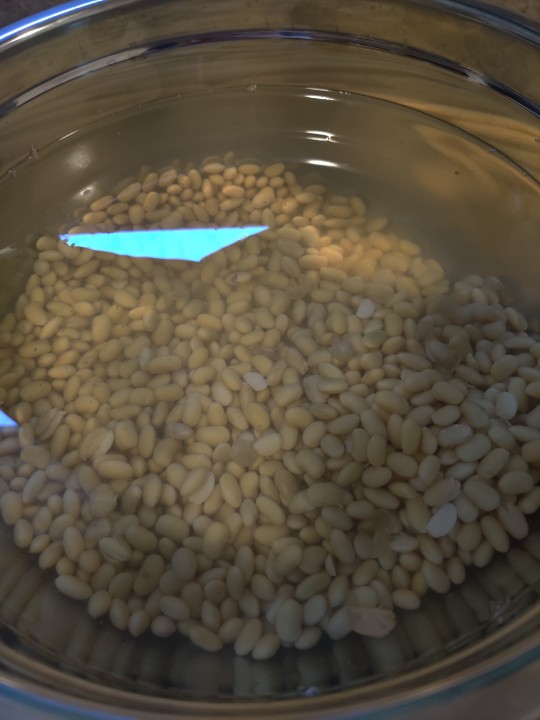
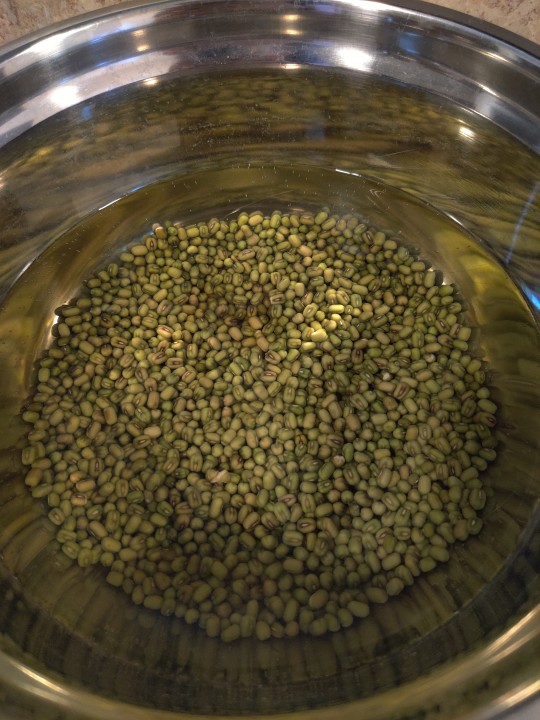
The mung beans will be sprouted. I drained off the water put them into colanders in big bowls, gave them their first watering, and then covered them with a dark towel.
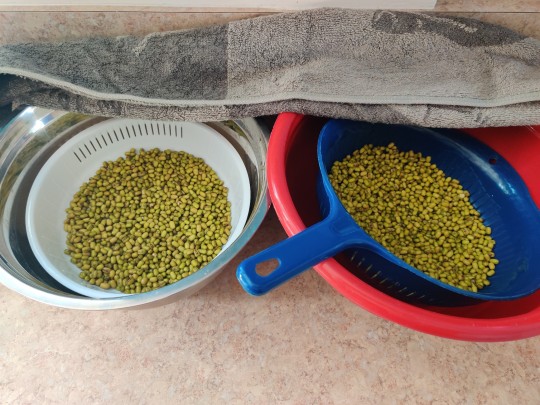
My next task was rinsing the soybeans and removing their skins. Then I boiled them, drained them, added them to a blender with fresh cold water, and blended them to make soy milk. Then placed the soy milk through a nut milk bag and squeezed it to remove the pulp, or okara.

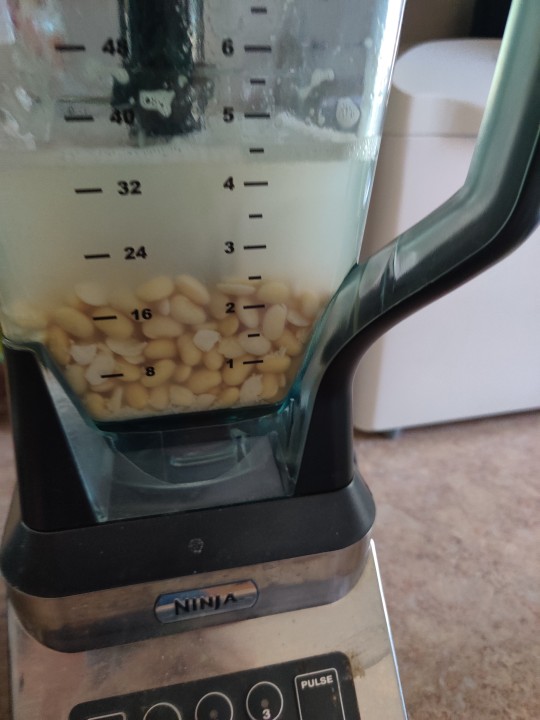
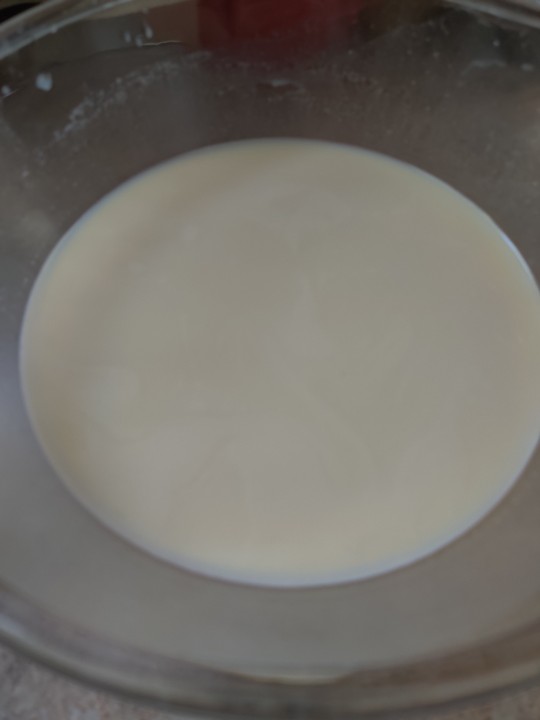
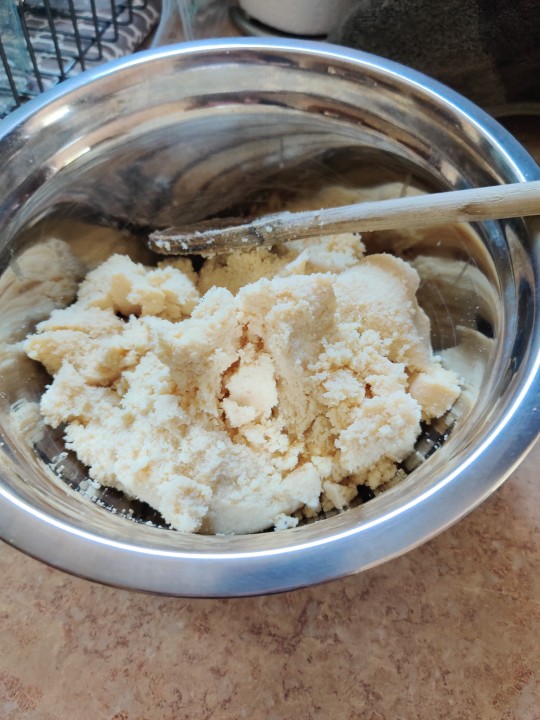
The soy milk was a success although it's got a decently strong beany flavor. Next up on the docket was taking eight cups of that soy milk bringing it almost to a boil, shutting off the heat, and adding an Epsom salt coagulant to try and separate the curds from the whey in order to make tofu. This was an unmitigated failure and I'm not sure why because I followed the recipe to a T. It started to separate and then never continued. So eight cups of soy milk literally went down the drain. (Featuring the tofu press for the tofu that never was 😭)

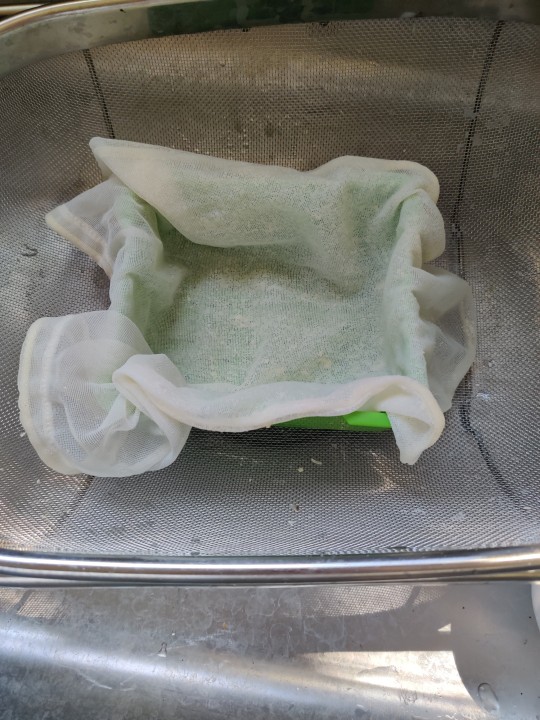
I also tried my hand at making homemade mayonnaise with vegetable oil, vinegar, and some of my homemade soy milk, but it refused to emulsify It's currently in the fridge and I will work on it later or repurpose it.
The grand success of the day has been dinner, which was general tso's tofu with broccoli over sticky rice.
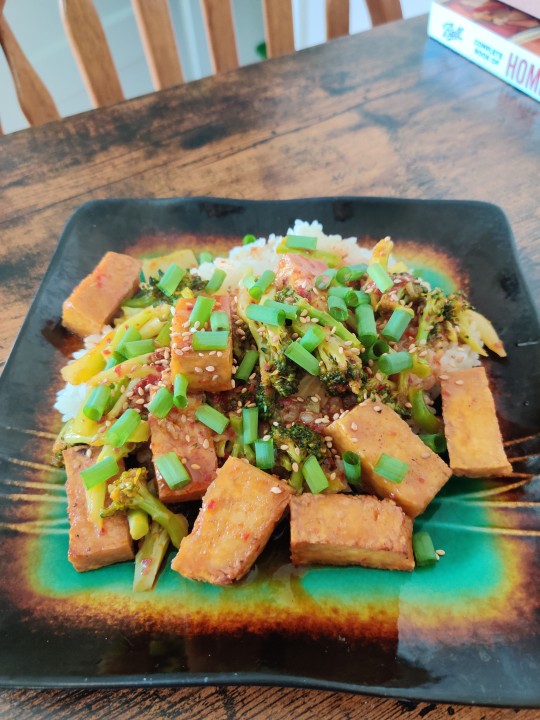
#vegan#vegan food#fried tofu#tofurecipes#veganrecipes#vegan cooking#sprout#what vegans eat#cooking fail#vegetarian#vegetarian recipes
12 notes
·
View notes
Text

Happy Chinese New Year -Year of the Pig 🐷 🧧 (belated)_ Foodie Friday Edition! Some Mung Bean Cake and some Sesame Bean Curd Crisps (crispies!)
#illustration#digital art#art#digital drawing#drawing#autodesksketchbook#cny#cny2019#food#foodie#foodiefriday#friday#friyay#eat#eats#mung bean#cake#sesame#snacks#holiday#digitalillustration#red#pig#foodillustration
3 notes
·
View notes
Text
A&J Bakery, 1300 E Main St, Ste 102, Alhambra, CA 91801
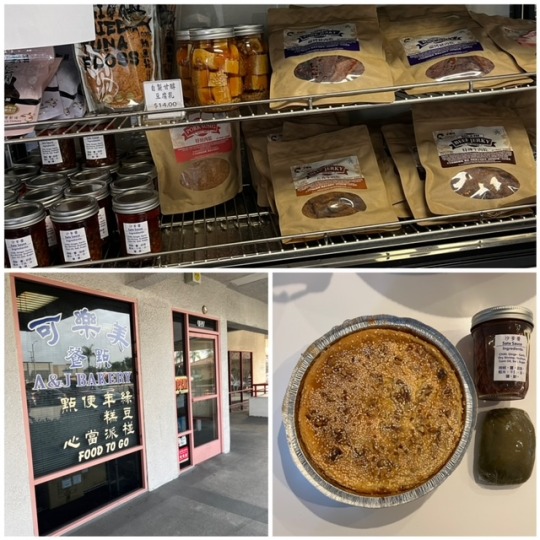
The last time I went to A&J was many years ago. A&J is a Taiwanese bakery. The signs are in Chinese, so if you’re not familiar with what they offer, it’s confusing. They make their own nian gao (rice cakes), shao bing, mung bean pastries, red bean pastries, etc. They also sell pork sung, jerky, sauces, fermented bean curd and probably some other things (I can’t read Chinese). I think they offer lunch bentos though I went in the late afternoon and didn’t see any. They’re also known for moon cakes.
I bought a pine nut nian gao ($17) aka sweet sticky rice cake as a Chinese New Year gift. I didn’t get to try it. Hope it was good. It was still warm when I bought it. I think there was a red bean filling.
Herb rice cake ($3.95): Reminds me of a savory Taiwanese rice dumpling, it’s green because it’s made with a mugwort. The glutinous rice cake (mochi) was soft, smooth, and chewy. The filling of dried radish and dried shiitake mushrooms had a very Chinese flavor…loved it. The mushrooms were meaty. There might have been some pork in there too? I don’t know where else you can get these.
A&J Bakery is located in a small strip mall with ample parking. The bakery is small and no frills. Closed on Sundays and Mondays. $30 credit card minimum.
4.5 out of 5 stars. By Lolia S.
#A&J Bakery#Taiwanese bakery#Taiwanese deli#Alhambra#shao bing#mung bean pastry#nian gao#moon cakes#sticky rice cakes#Taiwanese food
1 note
·
View note
Text
Nutritionally Dense foods to Include in Your Female Weight Loss Diet
Fruits and veggies consisting of tomatoes, spinach, okra, cabbage, mushrooms, papaya, pomegranate, guava, apples, and so forth are fine assets of nutrients and nutrients.
Beans and legumes consisting of mung beans, black-eyed peas, kidney beans, lentils, pulses, and chickpeas are a critical part of the Indian diet. If you're vegan or vegetarian, they may be additionally a remarkable supply of plant protein.
Since protein is a critical part of the fat-loss diet regime for females, eggs are a remarkable supply of it. They also can assist offer an accelerated feeling of satiety and save you from overeating.
No Indian meal is whole without dairy merchandise like curd, ghee, buttermilk, and cottage cheese.
Indian food gets its protein restoration from meat, tofu, legumes, dairy, nuts, and seeds.
If you're a non-vegetarian, chook breast and lean meats are excessive in protein and iron and need to be covered in your diet.
Nuts like walnuts, almonds, and pistachios are low in energy and wealthy in antioxidants, nutrients, omega three fatty acids, and so forth. Thereby being a very good snacking option.
Olive oil contains monounsaturated fats, which help to keep your heart healthy and blood sugar levels normal, as well as assist in weight loss by increasing satiety.
Choose from a wide variety of native organic vegetables online varieties at the best prices online. Farzana has the cleanest, safest, and healthiest organic heritage foods.
0 notes
Text
Fruitful Tips To Eat Healthy Food During Pregnancy
Introduction:
A healthy diet is very important to living a healthy lifestyle at any time, but it's much more crucial if you're expecting or planning a pregnancy. According to Best Mother and Child Care Super Speciality Hospital, a healthy pregnancy diet will support the growth and development of your unborn child.
While you don't need to follow a specific diet, it's still crucial to eat a variety of meals every day to ensure that you and your kid are getting the proper amount of nutrients.
The best way to ensure that you get all the vitamins and minerals you need is to consume whole meals, but when you're pregnant, you also need to take a folic acid supplement.
Why Food During Pregnancy is a Crucial Thing to Both Mother and Her Unborn Baby:
Your pregnancy diet nourishes your health and provides your unborn child with the nutrition they need to survive and expand. Pregnant women should generally follow a balanced diet that is rich in nutrients and low in sugar, salt, and saturated fats.
Gaining weight during pregnancy is normal, but doing so at the expense of your health or the health of your unborn child raises the chance of difficulties. The mother's pre-pregnancy weight affects how much weight she can acquire safely. There is evidence to support adopting Body Mass Index (BMI) as a benchmark for acceptable weight gain during pregnancy.
What is a Balanced Diet?
A broad variety of nutritious foods from the five food groups are included in a healthy, balanced diet. To stay hydrated, it's also a good idea to drink a lot of water.
Cereals and whole grains
Vegetables and beans/legumes
Lean poultry, fish, meats, eggs, tofu, nuts, seeds, and legumes/beans
Fruit
Dairy foods, including curd, butter, cheese, and low-fat milk
Most of us go through phases of eating healthy and days when we may consume more "treat" items. Cravings during pregnancy can also make this more difficult to control, especially if they involve meals that are heavy in sugar, salt, or fat.
What About Pregnancy Cravings?
There is no evidence to support the old theory that pregnancy food cravings were an indicator of vitamin inadequacies in a pregnant mother's diet. Additionally, a mother's tastes may alter due to pregnancy, and once-appealing foods may now have a whole different flavor. Food aversions may emerge during pregnancy, partially as a result of hormonal effects.
Determine the Appropriate Calorie Count For You:
You don't necessarily need to eat twice as much when you're pregnant.
Most women don't require any extra calories during the first trimester (the first 12 weeks).
Second trimester (13-26 weeks) – Most women require an additional 340 calories per day during pregnancy.
After 26 weeks, the final trimester, most women require an additional 450 calories per day.
To find out how many calories you need when pregnant, consult your doctor or midwife.
Every Week, Consume 8 to 12 Ounces of Seafood:
Healthy fats found in fish and shellfish are beneficial to both you and your unborn child. However, some fish are heavy in mercury, a substance that might harm the growth of your kid. Eating seafood that is high in beneficial fats but low in mercury is a good choice.
Foods to avoid during pregnancy
Don’t eat certain foods:
These foods might contain bacteria that are harmful to your infant. Prevent from:
Uncooked or undercooked fish or shellfish, such as raw oysters or sushi
Unless they are pasteurized, soft cheeses (such as feta, Brie, and goat cheese)
Poultry, eggs, or meat that is rare or raw
Unpasteurized juices or milk
Hot dogs, smoked seafood, luncheon meats, and deli meats—but only if they've been heated to a sizzling temperature.
Salads that have already been prepared, such as ham, chicken, or seafood salad
Raw sprouts include alfalfa, clover, radish, and mung bean varieties.
Limit Drinks with Caffeine and Added Sugars:
Decaf is recommended if you drink coffee or tea. Choose unsweetened choices and avoid adding more sugar.
Replace sugar-sweetened beverages like soda, fruit juice, and energy or sports drinks with water or seltzer.
No quantity of alcohol is safe to consume while pregnant.
Important Nutrients:
Thinking of nutrients, while all are crucial now, the greatest foods for pregnancy are those that are rich in vitamins and minerals that support the growth and development of your unborn child, such as:
Folate
Iron
Calcium
Vitamin D
DHA
Iodine
Choline
Best Foods to Eat While Pregnant:
Lean meat
Lentils
Yogurt
Wild salmon
Avocado
Edamame
Nuts
Carrots
Red bell peppers
Mangoes
Eggs
Kale
Oats
Bananas
Sweet potatoes
Quinoa
Low-fat milk
Dried fruit
Water
Starchy Foods (carbohydrates) in Pregnancy:
Starchy meals help you feel satisfied without having too many calories and are a vital source of energy, several vitamins, and fiber. Some of the foods on the list are bread, potatoes, morning cereals, rice, pasta, noodles, maize, millet, oats, and cornmeal. If you want chips, pick oven chips that are lower in salt and fat.
They should take up more than a third part of your diet. Choose wholegrain or higher-fiber alternatives like wholewheat pasta, brown rice, or just leaving the skins on potatoes instead of refined starchy (white) foods.
Why Do Women Need More Iron During Pregnancy?
An essential component of hemoglobin, the molecule in the blood that transports oxygen throughout the body, is iron, a mineral. In muscles, iron also transports oxygen, which aids in optimal muscle function. Your resilience to illness and stress is increased by iron.
To make sure that you and your unborn child are getting enough oxygen, it is crucial to take more iron while you are pregnant because the body absorbs iron more effectively during this time. Additionally, iron will aid you in avoiding fatigue, sluggishness, agitation, and depressive symptoms.
Conclusion:
Consult form Dietitians and Nutritionists for Women and Child Health professionals for advice if you are experiencing any issues that prohibit you from eating a balanced diet and gaining weight the right way. The nutrition experts, and registered dietitians, are on hand to assist you in eating healthfully during your pregnancy.
#best maternity hospital near me#Mother and Child Care Hospital in Pune#Best IVF center in Pune#multispeciality hospital Pune
1 note
·
View note